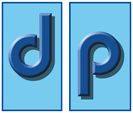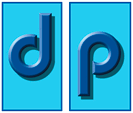Print and Education
A Vital Relationship Explained
This body of work will argue strongly that when it comes to a binary choice between screen reading and paper reading, is it worth the cost of the book or pamphlet necessary for students to achieve maximum potential in the education system?
This theory is supported by empirical and objective scientific evidence carried out by Professor Virginia Clinton. She is a leading expert in the field of health and behaviour at the University of North Dakota, USA. Professor Clinton brought together the findings of 33 past studies which were carried out between 2008 and 2018, therefore the findings are very contemporary. The subjects used for the investigation were both adults and children, all were native English speakers and had the usual reading skills for their age.
The examination revealed no major differences in reading speed when comparing screen and paper reading. However, data evidence did demonstrate a higher level of understanding and comprehension in favour of the printed text. In plain speak, evidence revealed paper reading to be far more ‘efficient’. It is important to note that these advantages are associated with ‘expository’ texts, this is information used to describe or explain something, for example an explanatory essay which is composed to clarify certain facts or ideas that students are required to learn from. This study exposed no discernible difference when it comes to ‘narrative’ text -ie: fiction.
Analysis also revealed that paper readers have greater recognition of how well they have understood a text, compared to screen readers. This skill is known by academics as ‘metacognition’. The word ‘cognition’ means the mental action of increasing knowledge and understanding. Therefore, ‘metacognition’ means the ability to analyse one’s own thinking. Professor Clinton discovered during her research, that screen readers have a tendency to believe that they understand a text better than they actually do. Therefore, they are more likely to overestimate their ability to do well when tested on any of the materials that they have read and studied. It should be noted that over confidence is an affliction that all readers suffer from. Yet, this inflated sense of ability and understanding is especially common amongst screen readers.
Why students don’t read as well on screens as from printed text is a fascinating question. Some experts argue that the flicker and glare of screens taxes the brain more and the constant temptation to digress, in the form of clicking on a link in order to multi-task is an obvious distraction. This is not a problem when reading from print. Furthermore, digital readers spend more time scanning for key words, rather than actually processing what they are reading. It is important to recognise that internet advertising and marketing is intended to suck potential consumers into rabbit holes, where a ‘group of ferrets’ can entice potential customers with products and services of all kinds. By the way ‘group of ferrets’ means a ‘business’. A survey revealed that 67% of students believe that they can successfully multi-task whilst screen reading, compared to only 41% of print readers. Surely when studying, it would be preferable to concentrate on the matter at hand only, rejecting all other distractions and focusing the mind.
There is great emphasis on the importance of students getting enough sleep, in order to succeed. When you are winding down for the night, reading from a screen is not recommended. Studies show that the blue light from the screen can have a negative effect on a student’s Melatonin levels, also on their Circadian Rhythm, which makes it harder to fall asleep and leads to grogginess when awaking. However, when it comes to reading from print the opposite effect occurs. The engagement and brain activity, has the consequence of helping a student relax and settle into a beneficial sleep cycle. So, if you are hoping for a good night’s sleep, stick with print.
Students who have books and other printed informational texts at home are likely to score higher in academic tests. Scientists believe this effect is related to the tactile sensation of holding a printed product in their hands. This is especially true for those from disadvantaged backgrounds. Researchers believe that being in possession of the printed text encourages younger people to read multiple times as the product is constantly at hand. They are also more likely to discuss their findings and conclusions with parents and/or siblings and create discussion and debate.
Finally, Professor Clinton’s analysis is backed up by two other major academic investigations. One by scholars at the University of Maryland USA in 2017 and another by scholars in Israel and Spain in 2018. Therefore, I conclude after careful research and analysis that in order to develop greater reading comprehension, critical thinking skills and deeper levels of understanding, it is vital that the relationship between Print and Education be continued and invested in. This I believe will benefit the younger generation and society in general.
Simon Jones 23rd December 2020














Leave A Comment